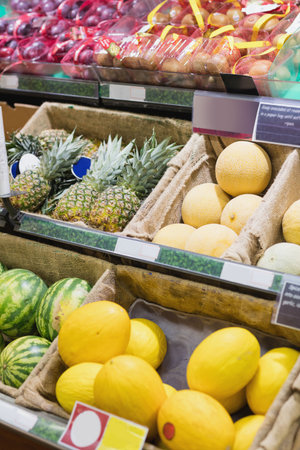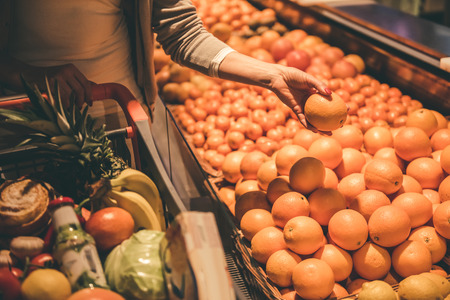Introduction: Shifting Seasons on the British Table
The British approach to food has always been deeply intertwined with the rhythms of nature, where eating seasonally is not just a culinary tradition but also a reflection of harmony between body and environment. For generations, Britons have celebrated the changing seasons through dishes that make the most of local produce—think spring asparagus, summer berries, autumn root vegetables, and winter brassicas. This natural flow was once seen as both practical and nourishing, aligning diet with the body’s needs in different weather patterns—a notion that resonates with holistic and traditional health philosophies. However, recent years have brought profound changes to this long-standing relationship. With Brexit reshaping trade borders and climate change altering the very fabric of Britain’s growing seasons, families and chefs alike are facing new challenges and opportunities at the dining table. As we step into this era of uncertainty and adaptation, it becomes ever more vital to understand how these forces are shifting what it means to eat seasonally in the UK, and how embracing these changes can support both personal well-being and environmental balance.
Brexit and Its Influence on UK Food Sourcing
Since the United Kingdom’s departure from the European Union, commonly referred to as Brexit, the landscape of food sourcing in the UK has undergone notable shifts. The transition has brought both challenges and opportunities, especially concerning the availability of seasonal produce and the delicate balance between locally-grown and imported foods. From a holistic perspective, these changes not only affect what appears on British dinner tables but also impact the natural harmony between people and their local environment—a principle deeply rooted in traditional medicine and mindful living.
Changing Patterns in Food Imports
Brexit introduced new trade agreements, tariffs, and border checks that have complicated the movement of food products across borders. Imported fruits and vegetables, which once arrived swiftly from EU countries, now face delays and increased costs. As a result, British consumers are experiencing fluctuations in the availability of certain foods, especially those that are out of season locally. This shift invites a reconsideration of dietary habits—encouraging greater appreciation for what is naturally available within each season.
Impact on Seasonal Produce Availability
The table below highlights some key differences in produce availability before and after Brexit:
| Produce Type | Pre-Brexit Availability | Post-Brexit Availability |
|---|---|---|
| British-grown apples | Widely available year-round (supplemented by imports) | More reliant on local harvest; limited off-season supply |
| Imported citrus fruits | Easily accessible throughout winter | Occasional shortages; higher prices |
| Leafy greens | Consistent supply via EU imports | Seasonally restricted; more focus on domestic varieties |
The Shift Towards Local Foods
With imports becoming less predictable, there is a renewed emphasis on sourcing food locally. This aligns with traditional wisdom that advocates eating foods in harmony with nature’s cycles—a practice believed to promote optimal health and balance. Local farmers and markets have seen increased interest as Britons adapt to seasonal rhythms, rediscovering heritage crops and embracing homegrown flavours. However, this shift also requires mindful adjustment: diets must be flexible to accommodate what is truly in season, fostering resilience both individually and collectively.
Mindful Consumption in a Changing Food Landscape
The evolving dynamics of food sourcing post-Brexit encourage UK residents to reconnect with the land and its natural offerings. By choosing foods that grow harmoniously with the British climate, individuals can better support their own wellbeing as well as local communities—embodying a holistic approach that honours both tradition and adaptation amid change.

3. Climate Change and the British Growing Season
Over recent years, the British climate has become increasingly unpredictable, with erratic weather patterns and shifting seasons directly influencing the types of crops that can be cultivated across the UK. Traditionally, Britons have relied on a clear demarcation between spring planting and autumn harvesting, but climate change is disrupting these established rhythms. Warmer winters have led to earlier bud bursts in some fruit trees, while unseasonal frosts threaten harvests just as growth begins. Prolonged periods of drought or unexpected heavy rainfall can damage delicate crops such as strawberries, lettuces, or root vegetables, making local produce more variable in both quality and quantity.
This instability in the growing season forces farmers and home gardeners alike to adapt by experimenting with new varieties or turning to resilient heritage breeds that are more tolerant of unpredictable conditions. On a broader level, local food markets and supermarkets face challenges in maintaining steady supplies of British-grown staples. For those following a seasonal diet rooted in traditional British fare, this means that certain fruits and vegetables may now appear later or earlier than expected—or sometimes not at all in a given year.
From a holistic perspective inspired by Eastern philosophies, our bodies thrive when we eat foods that grow naturally in our immediate environment and season. The disruption of these cycles not only affects physical health but also impacts our sense of balance with nature’s rhythms. As climate change continues to influence what can be grown locally, Britons may need to cultivate greater flexibility in their eating habits—embracing new ingredients while remaining mindful of how dietary choices resonate with both personal wellbeing and the changing land.
4. From Market to Table: Navigating New Seasonal Choices
The landscape of British food markets and local producers is evolving rapidly as the effects of Brexit and climate change reshape what ends up on our tables. The traditional harmony between the seasons and local produce—a principle echoed in both British heritage and holistic health philosophies—faces new challenges and opportunities.
Shifting Patterns in Local Markets
With shifting import regulations post-Brexit, many consumers have turned their attention to home-grown options. Local farmers’ markets are experiencing a revival, offering freshly picked produce that reflects the UK’s changing seasonal cycles. However, growers must adapt to unpredictable weather patterns, which sometimes disrupt the availability of familiar fruits and vegetables.
Community Gardens: Grassroots Resilience
Community gardens are sprouting up across cities and towns, acting as sanctuaries for those seeking both nourishment and connection. These shared spaces enable residents to grow their own food while fostering a deeper awareness of natural rhythms—an approach aligned with mind-body balance in traditional medicine. Community efforts often focus on hardy crops resilient to erratic weather, encouraging a shift toward eating what thrives locally at any given time.
Small Producers Adapting to Change
Small-scale producers are at the forefront of innovation, experimenting with crop varieties better suited to new climatic realities. Some are introducing heritage grains and vegetables that once flourished in Britain’s past, while others invest in greenhouse technologies or regenerative farming practices to counteract environmental stressors.
Emerging Trends: A Comparative Overview
| Aspect | Pre-Brexit/Climate Change | Current Trends |
|---|---|---|
| Produce Variety | Stable seasonal selection, reliant on imports for diversity | Greater emphasis on native & adaptable crops, reduced imports |
| Consumer Behaviour | Preference for convenience & global choice | Increased interest in provenance & seasonality |
| Sourcing Channels | Supermarkets dominate supply chain | Rise of local markets, community-supported agriculture (CSA) |
Cultivating Mindful Eating Practices
This evolving landscape invites Britons to reconnect with nature’s cycles, honouring the wisdom of adapting one’s diet according to what each season offers. Such an approach not only supports local economies and sustainable practices but also echoes the holistic view that living in tune with the environment can nurture both body and mind.
5. Health, Harmony, and Traditional Wisdom
The recent shifts in seasonal diets across the UK—driven by Brexit-related supply changes and the unpredictable rhythms of climate change—echo principles long held in traditional medicine. For centuries, both Western herbal traditions and Eastern practices like Traditional Chinese Medicine (TCM) have emphasised the vital connection between what we eat and how we feel. Central to these philosophies is the belief that harmony with nature’s cycles supports physical health and emotional balance.
In the past, Britons intuitively followed the wisdom of eating what was freshly available: warming root vegetables during colder months to bolster internal energy, or cooling fruits and leafy greens in summer to dispel excess heat. With global supply chains disrupted and weather patterns altering harvests, communities are being called back to these roots—quite literally—to adapt their diets according to what is locally grown and seasonally abundant.
This adaptation is more than just practical; it is a means of fostering resilience. In holistic health, adapting our habits to our environment is seen as essential for maintaining equilibrium. When we align our meals with the shifting seasons and local offerings, we help support digestion, strengthen immunity, and cultivate a sense of belonging within our community.
Moreover, traditional perspectives remind us that food is more than sustenance—it is medicine for body, mind, and spirit. By embracing this approach during times of change, whether due to political or environmental forces, we can nourish ourselves in a way that honours both our personal well-being and the greater good of our local ecosystems.
6. Looking Forward: Embracing Resilience and Innovation
As the UK faces the twin challenges of Brexit and climate change, there lies a unique opportunity to reimagine the nation’s relationship with food. The disruption of traditional supply chains and shifting agricultural conditions have certainly created uncertainty, yet they also invite us to embrace resilience by drawing upon time-honoured traditions while welcoming new ideas. By returning to the wisdom of seasonal eating—so deeply rooted in British heritage and echoed in holistic philosophies such as Traditional Chinese Medicine—we can support both personal well-being and environmental harmony. At the same time, innovation is vital. Embracing cutting-edge agricultural techniques, investing in local producers, and fostering community-supported agriculture schemes not only strengthen our food security but also encourage diversity on our plates. Forward-thinking chefs and home cooks alike are already reinterpreting classic British dishes using sustainable ingredients and plant-forward approaches, proving that tradition can evolve without being lost. As we look ahead, building a more sustainable and resilient food culture requires collaboration among farmers, policymakers, businesses, and consumers. By combining respect for natural cycles with creative solutions, the UK can become a leader in nourishing its people and land—cultivating a vibrant food landscape that honours the past while embracing the future.

